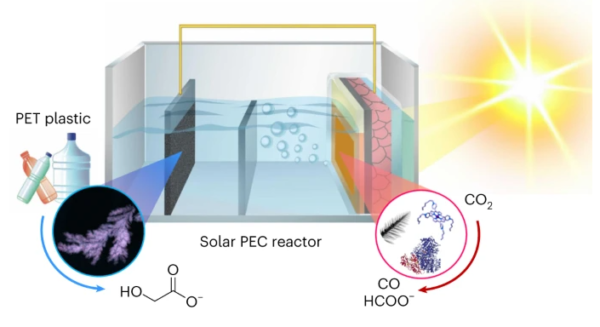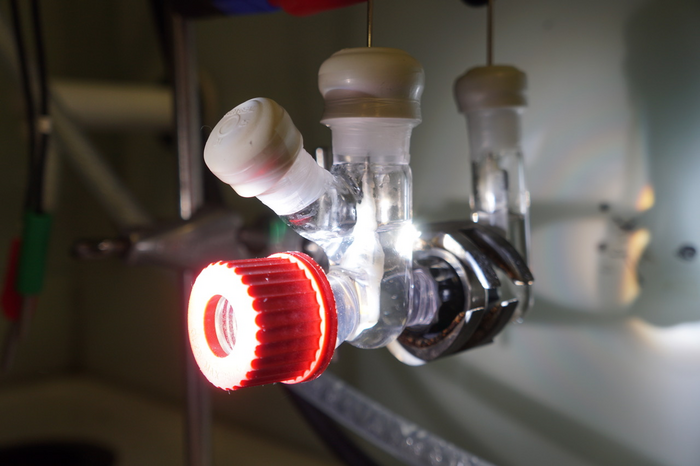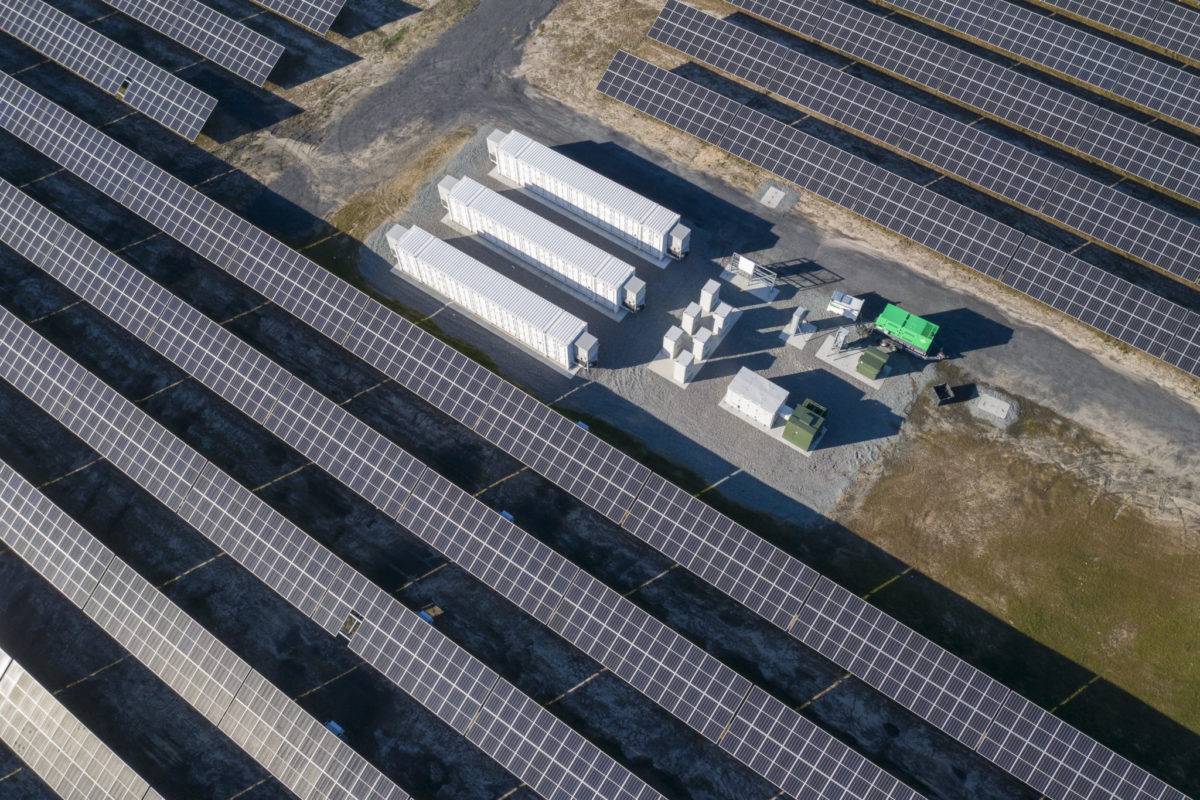https://pv-magazine-usa.com/2023/01/09/researchers-develop-solar-powered-waste-to-fuel-system/
Researchers develop solar-powered waste-to-fuel system

Image: University of Cambridge
Waste-to-fuel processes are in focus for many leading researchers that are seeking opportunities to reduce pollution, mitigate climate change, and make low-cost, sustainable fuel. The latest in such innovations comes from the University of Cambridge, where researchers have developed a system to use electricity from solar panels to power plastics-to-fuel and carbon dioxide-to-fuel processes. The results were reported in the journal Nature Synthesis.
The system can convert two waste streams into two chemical products at the same time. This is the first time that a process has been achieved in a solar-powered reactor. The reactor converts CO2 and plastics into a variety of products that have use cases across several industries.
“Plastic pollution is a huge problem worldwide, and often, many of the plastics we throw into recycling bins are incinerated or end up in landfill,” said Erwin Reisner, professor, Cambridge.
In early tests, CO2 was converted into syngas, a building block in sustainable liquid fuels. Plastic bottles were converted into glycolic acid, a common ingredient in skin care products. The research team said the system can be readily tuned to produce different products by changing the catalyst in the reactor.

Image: University of Cambridge
The device addresses two of the major environmental problems faced by humanity today: waste plastics and greenhouse gases. Powering the process with solar energy helps curb further emissions that would otherwise be expelled by traditional power sources.
Rather than traditional silicon-based solar cells, the Cambridge team opted for a light absorber based on perovskite technology. The perovskite-based photocathode in the reactor was selected as it enables the integration of different CO2-reduction catalysts.
“Developing a circular economy, where we make useful things from waste instead of throwing it into landfill, is vital if we’re going to meaningfully address the climate crisis and protect the natural world,” said Reisner. “And powering these solutions using the Sun means that we’re doing it cleanly and sustainably.”
The research was supported by the European Union, the European Research Council, the Cambridge Trust, Hermann and Marianne Straniak Stiftung, and the Engineering and Physical Sciences Research Council (EPSRC), part of UK Research and Innovation (UKRI). Erwin Reisner is a Fellow of St John’s College, Cambridge.
The Cambridge team said it plans to develop the reactor to produce more complex molecules over the next five years. The researchers said similar processes could be used to develop an entirely solar-powered recycling plant.
This content is protected by copyright and may not be reused. If you want to cooperate with us and would like to reuse some of our content, please contact: editors@pv-magazine.com.




